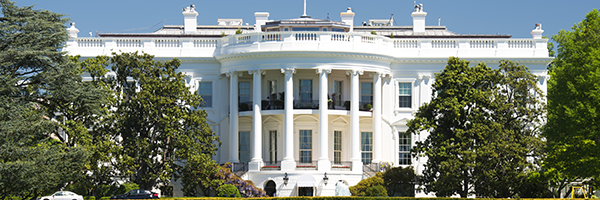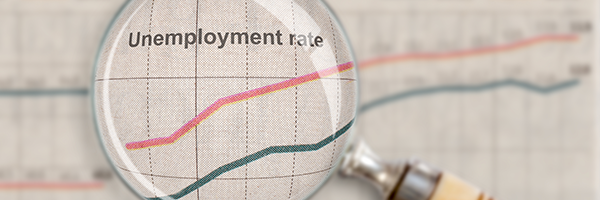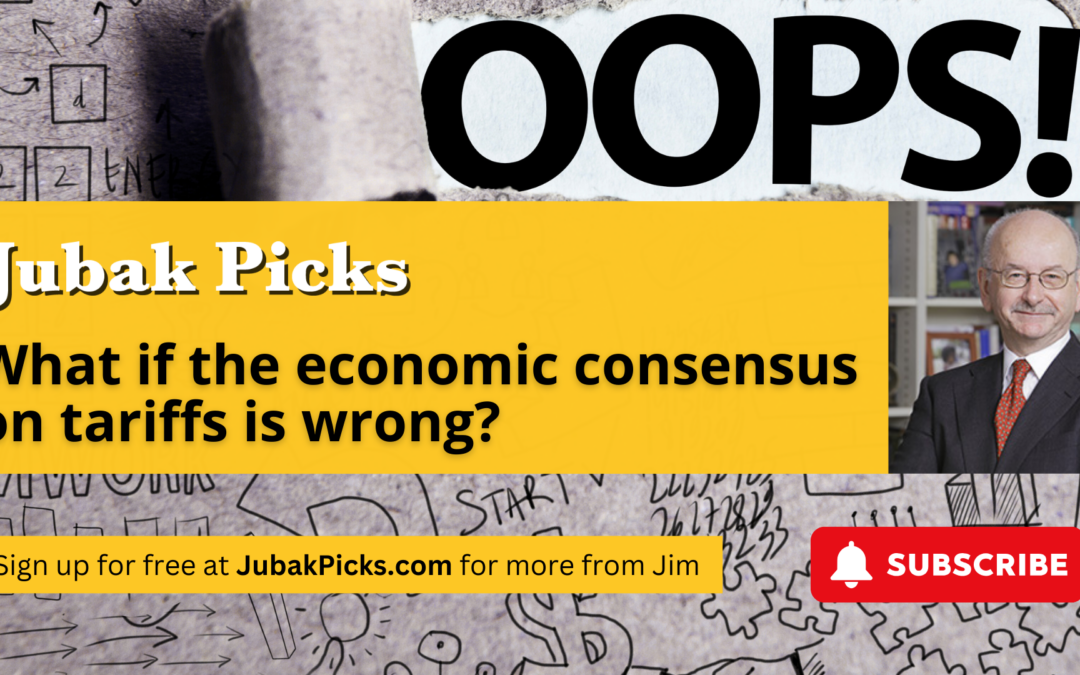
January 15, 2025 | Daily JAM, Morning Briefing |
As of noon New York time today, January 15, the Standard & Poor’s 500 was ahead 1.30%. The NASDAQ Composite and the small-cap Russell 2000 were both up 1.80% on the session. Today’s big moves come on relatively minor changes in inflation trends in this morning’s report on CPI inflation in December. And I think they have more to do with how afraid Wall Street is that the Federal Reserve isn’t going to deliver at least one or two interest rate cuts in 2025 than with any big news in today’s report. The consumer price index (CPI) rose at an annual rate of 2.9% in December, up from a 2.7% annual rate the previous month. That increase was in line with expectations. On a month-to-month basis, the index rose 0.4%. The “core” index, which strips out volatile food and energy prices and is much more important to the Fed than the headline inflation number, rose at a 3.2% annual rate in December. That was down slightly from its annual rate of 3.3% in November, and less than economists had expected. It’s this dip in the annual rate of core inflation that has investors feeling so optimistic today.

January 7, 2025 | AAPL, ACAD, ADSK, AGN, ALB, ALV, AMZN, ARCO, ARGT, AUY, BABA, BG, BGC, BHP, BMY, CHK, CMI, CNI, COH, CSCO, CTRP, CX, Daily JAM, DD, DE, DHR, DWDP, DXJR, EBAY, EEM, EFNL, ENB, EUM, EWZS, FANG, FANUY, FB, FCX, FEZ, FLR, FLS, FTV, GDXJ, GE, GGAL, GLD, GLW, GOOG, HAIN, HDB, HP, INCY, ING, IONS, ITUB, IVV, JCI, JO, JOY, KBWB, KMI, LFL, LNG, LUX, MGM, Mid Term, MIDD, MON, Morning Briefing, MPC, MXF, NJDCY, NKTR, OGXI, OKS, PEP, PFXF, POT, PXD, PYPL, QCOM, RSPP, RYN, SDRL, SFTBY, SH, SLB, SPWR, SQM, STO, SYNA, TCEHY, TPR, TRGP, TS, V, VALE, VEA, Videos, VMC, VZ, WBK, WES, XOM, XYL, YPF, Z-SYMBOLS |
The Institute for Supply Management’s index of services advanced 2 points to 54.1 last month. That show of strength in the economy–readings above 50 indicate expansion–was enough to push stocks lower as the markets began to price in a delay in the next interest rate cut from the Federal Reserve until July The measure of prices paid for materials and services rose more than 6 points to 64.4, suggesting that the drop in the inflation rate in the service sector–about 70% of the U.S. economy–might be over.

December 15, 2024 | AAPL, Daily JAM, MCD, Special Reports |
What you need as an investor and what your portfolio needs is a road map to the likely events of the beginning of this new administration. And a take on what those events are likely to mean for the financial markets–and the prices of stocks and bonds. And recommendations on what moves to make to respond to the events of the first 100 days of a Trump Administration. Which is what this Special Report is all about. Here /i’ll give you an investor’s calendar to the first 100 days of Trump; a run-down of the likely effects on the financial markets of the events in the first 100 days; and recommendations for moves that you should make with your portfolio.

December 14, 2024 | Daily JAM, Short Term |
When the Federal Reserve announces its latest interest rate move and it’s Dot Plot projections on future interest rates, inflation, and GDP growth, it will be the Dot Plot projections that matter to the financial markets.

December 11, 2024 | Daily JAM, Morning Briefing |
Inflation remains stubborn. The Consumer Price Index (CPI) rose at a 2.7% annual rate in November, according to Labor Department data released Wednesday. That was hotter than a 2.6% rise in October. But that matched economists forecasts. It was also above September’s 2.4% annual rate. On a monthly basis, inflation increased 0.3% from October to November, the biggest gain since April. Prices for housing, energy, and particularly food all rose.
CPI core inflation, prices excluding volatile food and energy categories, rose another 0.3% for the fourth straight month. The are rate was up 3.3% for the year. For the past six months, core inflation has been stuck at an elevated level above the Fed’s target of 2%.

December 8, 2024 | Daily JAM, Short Term |
U.S. consumer credit rose by $19.2 billion in October, smashing through the $10.1 billion consensus forecast. And surging from $3.2 billion in September, according to Federal Reserve data released Friday. One in three Americans are stockpiling daily necessities like toilet paper and non-perishable food out of fear that President-elect Donald Trump’s pledge to add tariffs to imported goods will lead to higher prices, according to a new survey by CreditCards.com

December 8, 2024 | Daily JAM, Morning Briefing |
All eyes will be on the Consumer Price Index inflation report for November due out on the morning of Wednesday, December 11. It’s the last big inflation data dump before the Federal Reserve meets on December 18.

December 6, 2024 | Daily JAM, Morning Briefing |
The U.S. economy added 227,000 jobs last month, the Labor Department reported Friday morning, December 6. In addition, revisions added 56,000 jobs to the totals for October and September. Which adds up to a strong recovery from the shocking low 12,000 new jobs initially reported for October. Initial analysis that the almost non-existant growth for October was due to hurricanes and strikes now looks correct. At the same time, the unemployment rate, which is calculated in a survey separate from that which produces the jobs total, ticked up to 4.2% from 4.1%. The jobs total and the unemployment rate were broadly expected by economists. The complete picture is of an economy showing a continued modest expansion. In my opinion, that’s enough to lead to a 25 basis point cut at its December 18 meeting in the Federal Reserve’s benchmark short-term interest rate from the current range of 4.50% to 4.75%. The CME FedWatch took today put the odds od a 25 basis point cut at the December meeting at 85.1%. That’s up from 66% odds a week ago

December 5, 2024 | Daily JAM, Videos |
Today’s video is What if the economic consensus on tariffs is wrong? It would be really bad news for stocks. The current consensus among economists is that tariffs will be inflationary as companies pass on rising prices to consumers. However, as Nir Kaissar recently wrote in an opinion piece for Bloomberg, this may not be correct. He used McDonald’s as an example. In February, McDonald’s CEO Chris Kempczinski said that the fast food restaurant has been losing low-income customers–houseold income of $45,000 or less– as the cost of its meals has risen. The price of a Big Mac, for example, has risen 25% since 2019, even though the price of raw materials has not risen at that rate. The operating margin at the company gone up and Wall Street expects that to continue, even as the company has lost customers. The company announced that they’d be offering a new, low price menu in an effort to retain a larger low-income consumer base. If more companies go in the direction of cutting costs to retain customers rather than passing on the cost of tariffs to consumers, Wall Street will be in for a big, unwelcome surprise in earnings since the current analyst consensus looks for operating margins to continue to climb in 2025 and 2026. 2025 is sure to come with volatility and uncertainty until we have a better idea of how high and far reaching the tariffs will be, and how companies will respond to them.

November 28, 2024 | Daily JAM, Morning Briefing |
Yesterday, Wednesday, November 27, the report from the Bureau of Economic Analysis showed that the Personal Consumption Expenditures index, the Federal Reserve’s preferred inflation measure, had continued the stall that began in May.

November 15, 2024 | Daily JAM, Videos |
Today’s video is Fed One and Done in December? On November 13, the CPI inflation numbers showed inflation ticking up slightly, but the market still believes the Fed will cut rates again in December. On November 13, the CME Fedwatch tool had it at 83% odds we’ll get a cut and I think it’s almost certain. However, when the Dot Plot forecast of GDP, inflation, and interest rates is released in December, I think we’ll see much more uncertainty for the future and likely a planned pause. The three major factors poised to affect the economy are a substantial tax cut, high tariffs and the possibility of mass deportations promised by the president-elect. While two of those items may cancel each other out–with tax cuts being massively stimulative and tariffs cutting into growth by 1.5-2 percentage points while raising costs for consumers, the question of deportations remains. Mass deportations could result in a huge labor shortage and disruptions to supply chains, leading to higher prices. The economy will be under a lot of inflationary pressure from these potential policies and it’s likely the Fed will announce a pause until they see how this all shakes out.

November 14, 2024 | Daily JAM, Morning Briefing |
I think we can expect another huge tax cut package to extend the tax cuts from 2017, and a set of tariffs on China, the European Union, and other trading partners with duties of somewhere between 20% and 200%, and an effort to deport 11 million illegal immigrants (and maybe a few legal immigrants too) And in the face of that policy mix I don’t think there’s any way for the Federal Reserve to reach its goals of getting inflation down to 2%, of lowering interest rates from levels left from the pandemic emergency, and of keeping the economy strong enough to prevent unemployment from climbing. Can’t be done. The Fed doesn’t even begin to have the tools to tackle all those challenges at once. And there’s a non-zero and statistically significant chance of a really serious mistake that would take a big bite out of the economy and the prices of financial assets. Can I tell you why I believe this?












